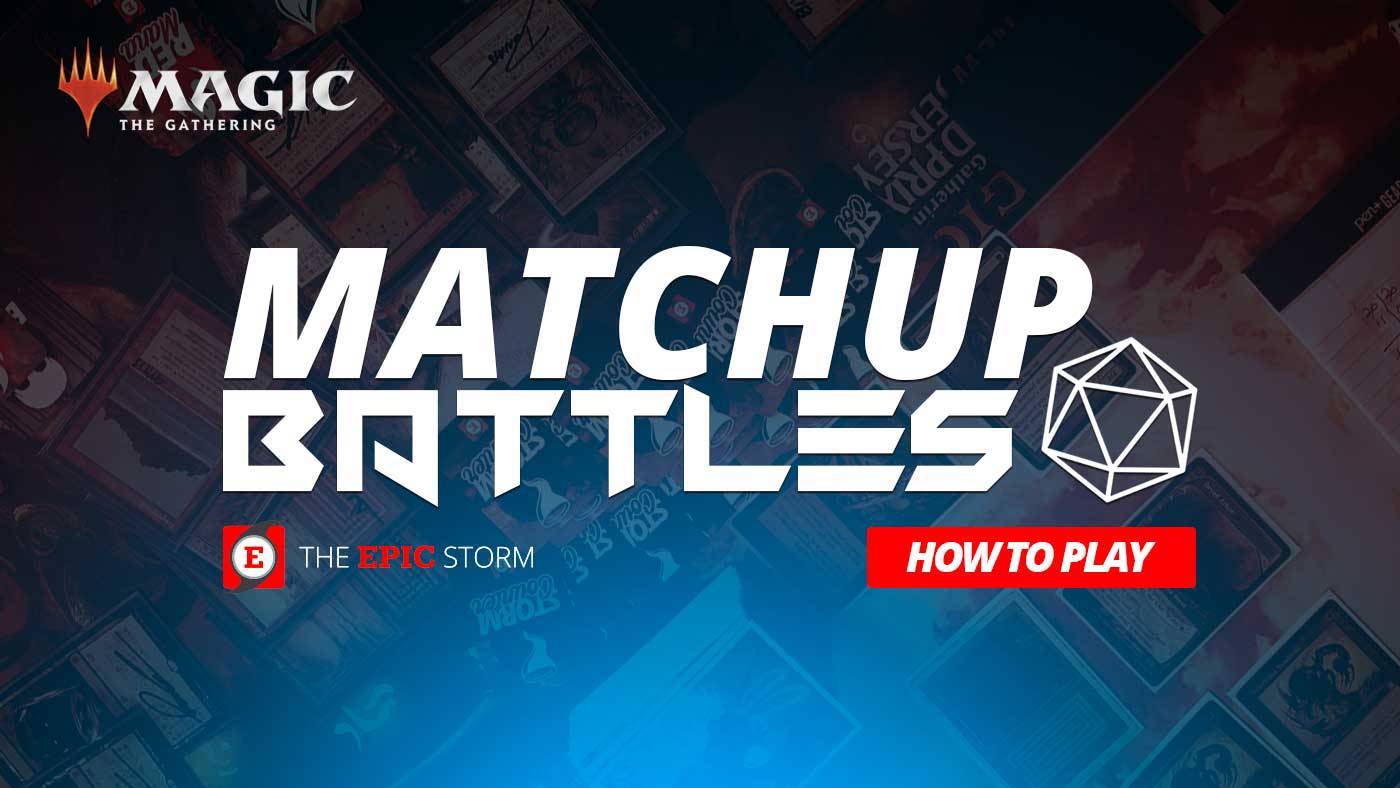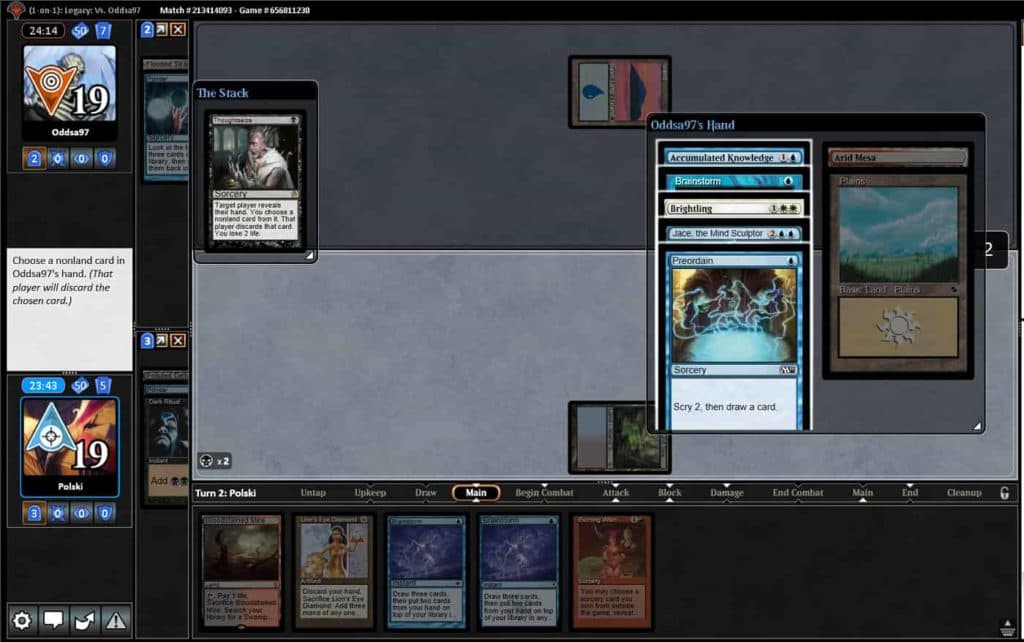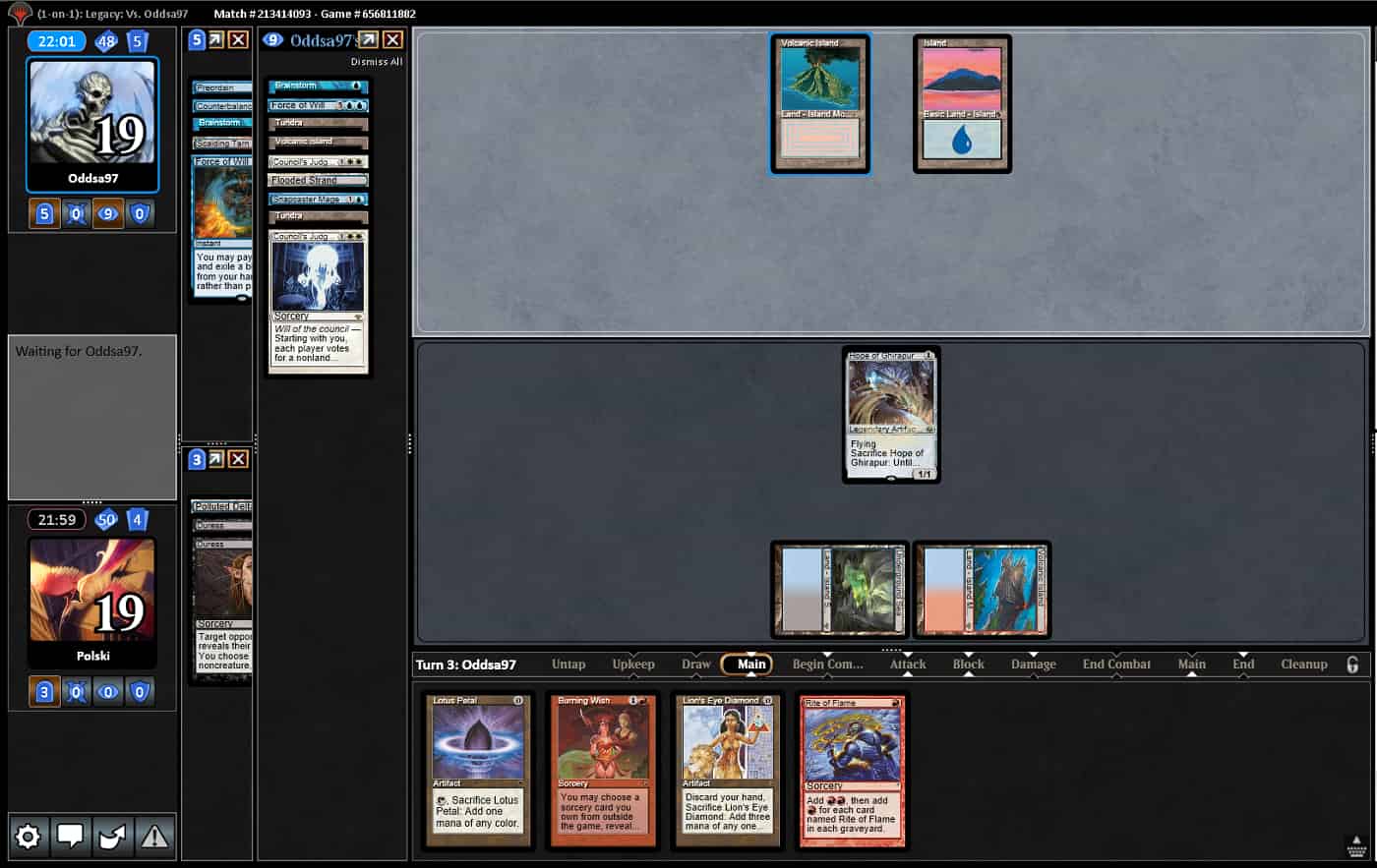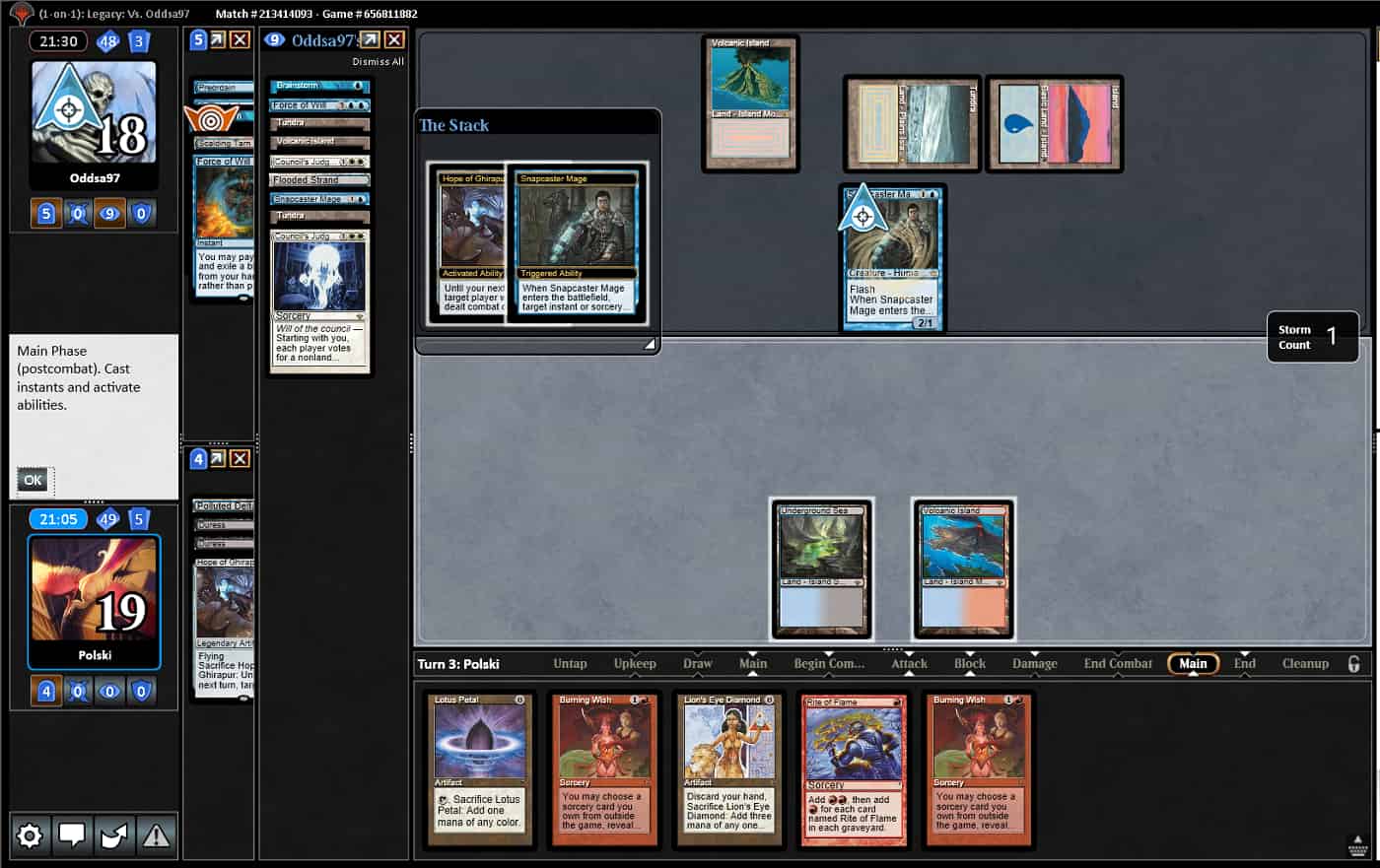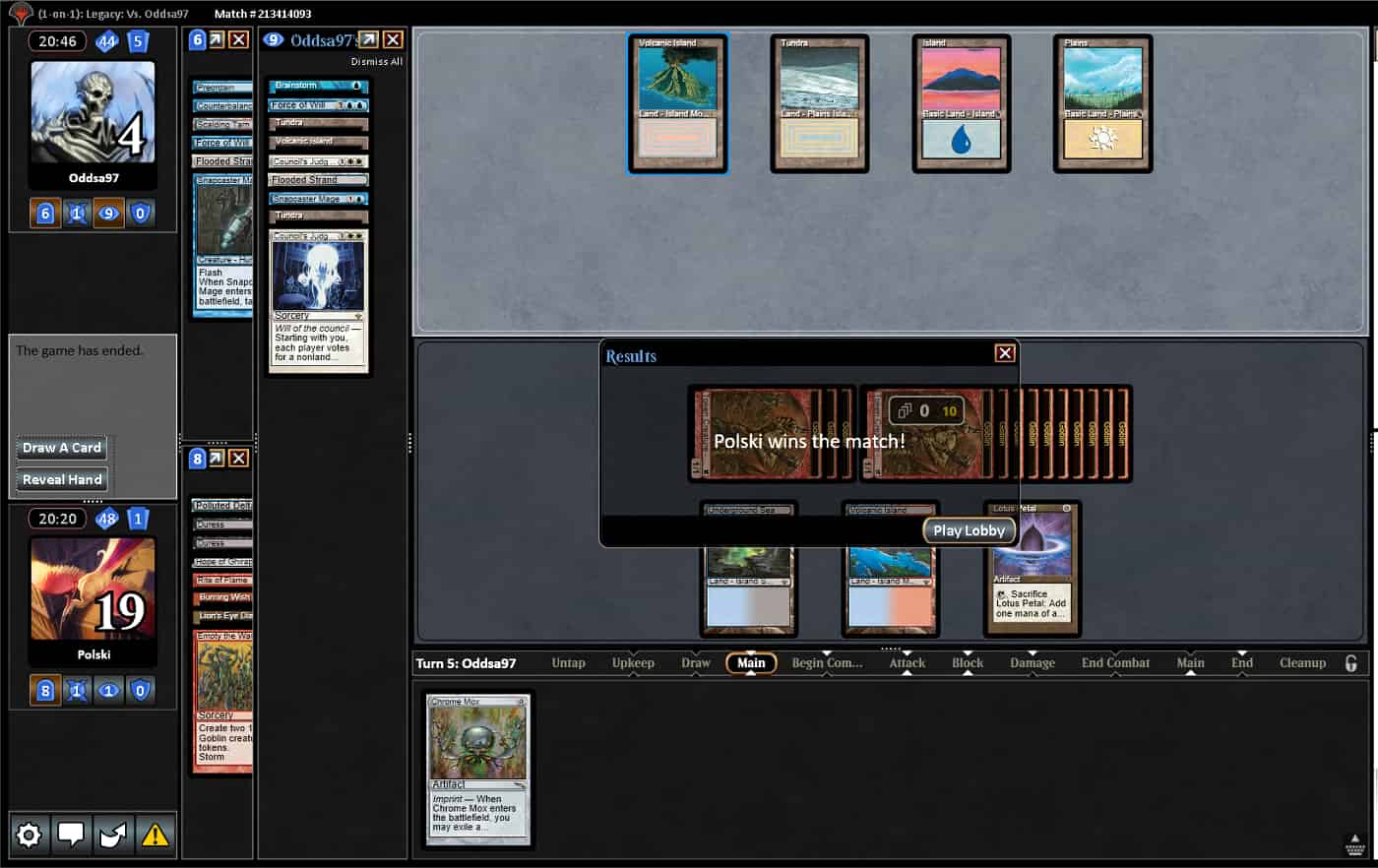Miracles is one of legacy’s premier control decks of the format and has been around ever since the “Miracle” keyword was printed in Avacyn Restored. It is a UW deck that often splashes black or red for utility cards. Over the past year and a half since, Sensei’s Divining Top got banned, Miracles has evolved to be centered around card advantage. With tools ranging from Snapcaster Mage to Terminus to Ponder and Counterspell, each card in the deck is a premium spell that has broad applications. With these qualities combined together, the Miracles pilot can sculpt their draws to fit whichever matchup they face. Miracles has proven itself to still be a major player despite being hit with a ban. I think it is here to stay, and whatever deck you play in Legacy you need to have a game plan to beat it.
How does Miracles matchup against TES?
Force of Will, Counterspell, Flusterstorm – Of all the decks in Legacy, Miracles probably plays the most counterspells. This can make it hard to try and combo off in the early turns of the game, but even harder as the game goes on. They will eventually be able to have enough mana and counterspells to make it near impossible to try and combo. Not just for Storm, but for any combo deck in the format. The counterspells that Miracles plays are unlike the ones we see from a Delver of Secrets deck or other midrange and tempo deck. Miracles plays less conditional counterspells and more hard counterspells that get better as the game progresses, instead of worse.
Terminus – It’s a miracle!! Not really, but this is the card where Miracles gets its name from. When they need to wrath creatures they have many cantrips in order to set up Terminus on the top of their deck, or even float it there until they need it. How does this impact storm? It means Empty the Warrens can be a liability if we get a window to combo off and make a dozen creatures then they could just all get destroyed. The good news is because we play Empty the Warrens then the Miracles players have to respect it and need to leave some number of these in their deck, making potential worse draws for when we go for Tendrils of Agony.
Monastery Mentor – Typically when playing against control decks we can keep slower hands because we know their is no rush, we can’t lose early in the game. Monastery Mentor recently changed that game. This creature and his army can end the game rather quickly with their numerous cantrips. Miracles players usually only play a couple copies, but it’s worth noting when this card is in play we don’t have much time.
Back to Basics, Counterbalance – Miracles also plays a decent amount of permanents. They aren’t just counters, cantrips and removal. They also play some cards to try to lock the opponent out from playing spells with cards like Back to Basics and Counterbalance. Unfortunately for us, both of these cards can be good at preventing us from “combo-ing” off. Back to Basics is a little easier to beat because it costs more mana and we have basic lands and Chrome Mox. Counterbalance on the other hand is tough for many decks with lower converted mana cost spells in their deck. Even without Sensei’s Divining Top in the format it is still brutal. Even just blind revealing can be good enough, but once they can start using cantrips to float cards on the top of their deck it can become unwinnable.
Deck List
Main Deck
- 4 Burning Wish
- 4 Infernal Tutor
- 4 Brainstorm
- 4 Ponder
- 4 Thoughtseize
- 3 Duress
- 1 Empty the Warrens
- 1 Ad Nauseam
- 4 Polluted Delta
- 3 Bloodstained Mire
- 2 Badlands
- 1 Underground Sea
- 1 Volcanic Island
- 1 Swamp
- 1 Island
